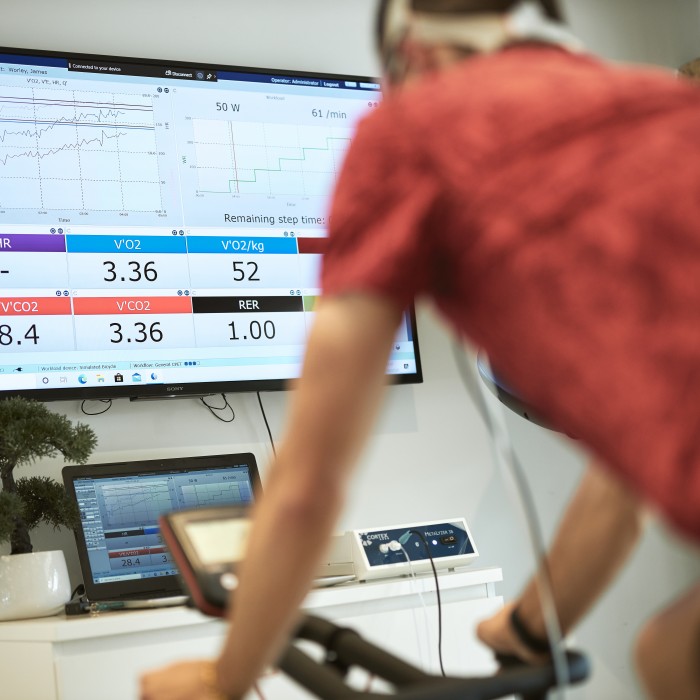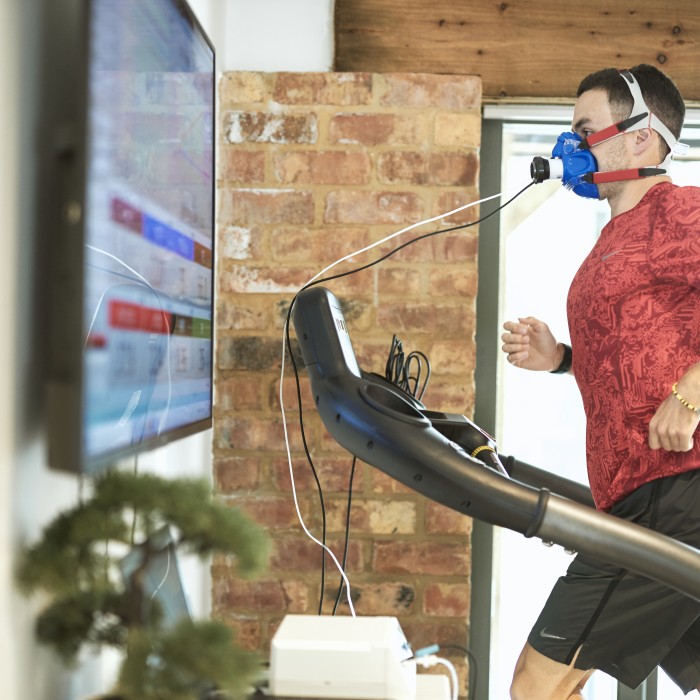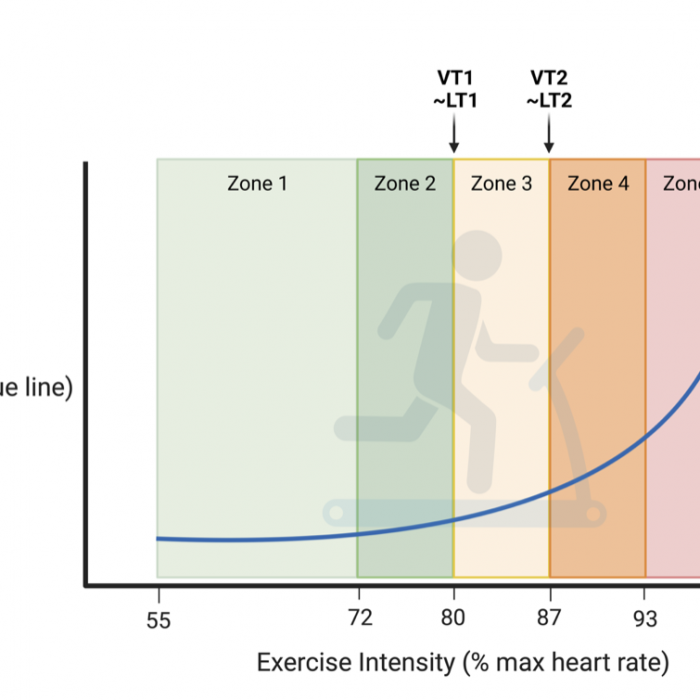Turbocharge Your Fitness: The Insider's Guide to VO2max and Ventilatory Thresholds
By Dr Daniel Owens, PhD SENr5 Minute Read

5 Minute Read
VO2max and ventilatory thresholds are among some of the most important physiological characteristics that we can measure. Put simply, these variables are measures of your cardiorespiratory fitness because they are underpinned by all components of your cardio-pulmonary system, which includes your heart, lungs, blood vessels, the blood itself and the muscles.
For both recreational and professional athletes, VO2max and ventilatory thresholds represent important measures of current fitness that they may wish to systematically improve through training since VO2max is a good indicator of aerobic performance.
For the rest of the population, VO2max may be equally important to understand, since cardiorespiratory fitness is a modifiable indicator of long-term mortality (study). Not only is a low VO2max associated with higher risk of dying, but having a high VO2max has been shown to reduce risk of coronary artery disease hypertension, diabetes, stroke, and cancer.
In this article, we’ll explain what VO2max and VT’s are, there relevance to you and how learning about your VO2max and VT’s can help you to establish a more targeted exercise structure to help you train smarter and improve your health and performance.


Ready to unravel the enigma of VO2max and VT’s?
Think of VO2max as your body's horsepower during workouts. It's a measure of the upper limit of oxygen your body can guzzle and employ during exercise. It offers a peek into how well your body shuttles oxygen to your muscles and how efficiently your muscles can convert that oxygen into energy.
Wondering how it's gauged? We use a graded exercise test (let's shorthand this to GXT), where you exercise on a treadmill or stationary bike while we keep an eye on your oxygen consumption and heart rate using gold-standard equipment and methods. As you push your limits, we identify your VO2max. A higher VO2max hints a superior cardiovascular fitness - your body's ability to deliver oxygen-rich blood to your muscles during exercise. It also doubles as a useful yardstick for fitness enthusiasts to keep track of their performance improvements over time.
Ventilatory thresholds (VT’s), on the other hand, are the red lines crossed during the GXT, before VO2max is achieved. These thresholds represent the juncture where your body's demand for oxygen outpaces its supply, nudging it to tap into alternative energy reserves and crank out more carbon dioxide. This shift changes your breathing patterns and can furnish valuable intel about your fitness level, ideal exercise intensity, and the efficacy of your training regime.
Take a look at the infographic above where we've mapped out how all this fits into an exercise test. You'll observe that as your workout intensity mounts, your blood lactate also hikes up, marking two thresholds (LT1 and LT2) that coincide with the first and second ventilatory thresholds (VT1 and VT2). At the end of the test, when you've given it your all, you should have reached your VO2max (determined using specialised gas analysis equipment) and max heart rate (measured with a heart rate monitor).
These metrics enable us to carve out your unique training zones to assist you in improving different components of your cardiorespiratory system. These zones provide a clear-cut strategy to guide your workouts, prevent injury and overtraining, and optimise your results by ensuring that your training intensity is tailored to your fitness level and goals.
Book a test with us.
Harnessing the Power of Data: Crafting your Perfect Fitness Plan
Ever heard of the 80/20 principle? This principle, derived from the research of renowned physiologist Prof. Stephen Seiler suggests that for maximum aerobic benefits, 80% of your training should be low-to-moderate intensity (zones 1-2), while 20% should dial up the intensity (zones 3+). This balance allows you to build a robust aerobic foundation while also developing your anaerobic energy system with high-intensity workouts like interval training.
A common misconception often observed among both athletes and non-athletes striving to enhance their fitness is the overemphasis on high-intensity training (zones 3+), while overlooking the significance of foundational endurance work (zones 1 & 2). This usually stems from the notion that intense workouts yield more substantial results, and that training in zones 1 and 2 feels too effortless to be beneficial. In reality, a strong focus on zones 1 and 2 cultivates a sturdy endurance base, promoting better recovery, fostering a more effective response to high-intensity workouts, and mitigating the risk of overtraining and exhaustion.
Scheduled rest days are also pivotal, as these are the periods when your body processes and maximises the benefits of your weekly training. Skipping these recovery periods can short-circuit your fitness gains (and increase risk of illness and infection).
Using this guiding principle, let's visualise a week's training plan for a novice runner aiming to improve their 10km run time. Remember, this is part of a progressive training schedule, where intensity and duration gradually scale up, with scheduled rest days interspersed throughout the week, and rest weeks taken every 4 weeks:
Closing thoughts…
The journey to superior fitness doesn't have to be a guessing game. Understanding your VO2max and ventilatory thresholds can unlock an entirely new level of insight into your fitness journey, whether you're an elite athlete or someone just looking to boost their health and fitness. It's an essential guide to training smarter, not harder, allowing you to tailor your workouts in the most efficient and effective way possible.
Book a test with us.
The Edge HPL is not responsible for any specific health or allergy needs that require supervision nor any adverse reactions you may have to the advice we provide - whether you have followed them as written or have modified them to suit your dietary requirements.
Any nutritional advice and information provided by The Edge HPL is based on our own experiences, research and knowledge. The information provided is not to be used in place of proper medical advice. The Edge HPL and its employees and representatives are not medical professionals, do not hold any type of medical licenses or certifications and do not practice medicine. If customers have any medical questions regarding any advice or information provided by The Edge HPL, they should consult their physician, or another healthcare professional. Please also refer to our Standard Business Terms and Conditions, which can be found on our website.